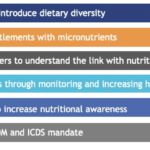Full Financial Inclusion in India? How the ‘JAM Trinity’ Can Help Businesses Make it a Reality
We have seen profound changes in India’s financial inclusion ecosystem in the past 10 years. Previously, the biggest concern was how to boost the supply of financial services to meet the demand. Infrastructural limitations and high operational costs constrained efforts to reach the “last mile,” leaving a lot of poor, rural families behind. Advances in technology, products and channels, and regulatory frameworks in the past decade, however, have finally brought financial services to the fingertips of millions of people.
But fixing access issues is just part of the equation; now we must do more to ensure poor families can actively use these services to improve their lives. Several advances have been made in how financial services are delivered in India. By giving more than a billion people unique identification numbers (Aadhaar) and making the remote-know your customer (e-KYC) process a reality, a framework has been put in place that could reduce the cost of customer acquisition. In addition, the Jan Dhan program aims to give a bank account to every Indian. These initiatives have opened up unprecedented opportunities, especially for remote communities. Rapidly falling prices of smartphones have enabled mobile network operators to bring fast data and mobile networks to remote corners, giving real-time connectivity and access to people.
However, the cost structure for businesses has not changed significantly as most of them have made only incremental adjustments to their business processes.
But taken together, this JAM trinity (Jan Dhan accounts, the Aadhaar ID system and mobile technology) combined with the abundant data on customer behaviours and preferences can allow us to design completely new business models that offer highly efficient, scalable and intelligent processes for customer acquisition, servicing, cross-selling and up-selling.
We have already made significant inroads: The government’s decision to route subsidy payments (e.g., for cooking gas and fertilizer) through bank accounts gives people a reason to use those accounts. Added benefits like lines of credit and highly subsidized accidental and health insurance are further incentives for Jan Dhan account users. Still, these accounts have remained merely a payment channel – rather than bringing fundamental change in customer use of financial services to improve their lives.
Making that fundamental shift will require us to adopt multi-layered solutions instead of treating individual problems in isolation, and to ensure we are providing real value to the customer. Over the past decade, Grameen Foundation India has helped organizations “go digital” and use customer insights to improve services for poor families. Looking ahead, we believe that three approaches will be important to achieving full financial inclusion:
Design affordable products for customers’ needs: In the next phase of digital development, it will be critical to create systems and solutions that allow different groups to derive the real benefits of digital finance. For a small business owner, this could mean tailored solutions from banks and payment companies that support enterprise growth and risk management. Another key factor will be optimizing cost structures for financial service providers so that the transition to digital finance leads to overall cost reduction through re-orienting the business processes.
Create opportunity for farmers and agricultural stakeholders: Almost 70 percent of India’s farmland is owned by small-scale farmers. Combining access to digital finance with access to information on market linkage and agriculture practices in real time can have a huge impact in transforming small-scale farmers’ subsistence living into viable agribusinesses. Tailored solutions for farmers and agricultural entrepreneurs can boost business growth and profitability.
Build financial and digital capability: Developing low-cost, scalable solutions to increase financial and digital literacy in poor communities is crucial, but requires a careful balance between direct person-to-person engagement and digital training tools. Direct engagement is essential to build trust and confidence and make adoption easier, but models based on human contact are expensive and not very scalable. There are multiple barriers to adoption of digital finance, such as a knowledge barrier and trust barrier. Addressing specific challenges faced by different customer segments such as women, neo-literate people and young people will be critical. Combining technology and direct human interaction can address these key barriers and would be a more effective strategy.
India is poised to make full financial inclusion a reality. But it will require bold innovation, experimentation and fundamental shifts in business models to transform the lives of our poorest.
Prabhat Labh is CEO of Grameen Foundation India.
Photo by Karl Grobl for Grameen Foundation.
- Categories
- Uncategorized



